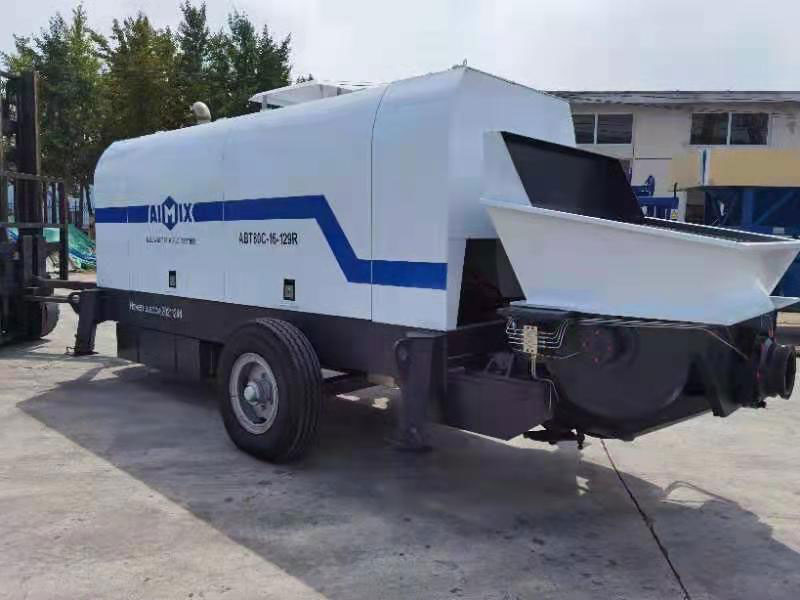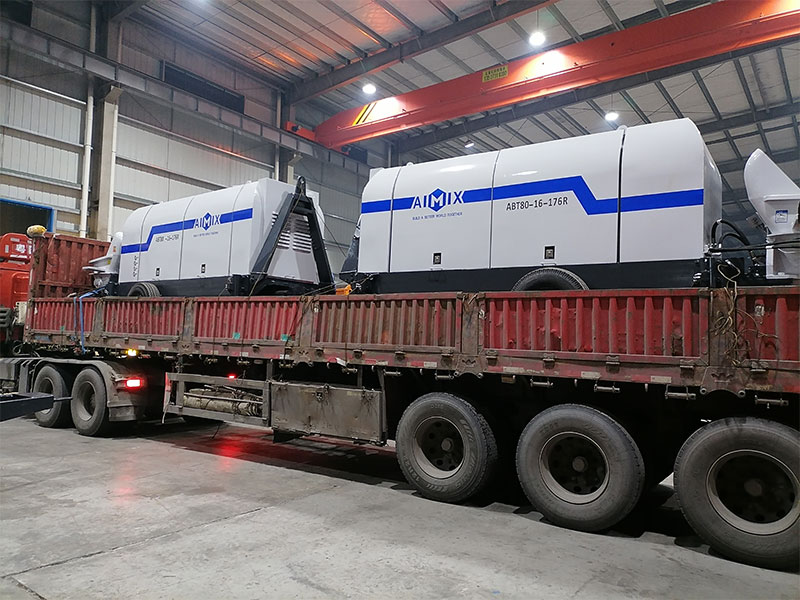The construction of floors, whether in residential, commercial, or industrial settings, demands precision, speed, and quality. Achieving these objectives requires the efficient and effective placement of concrete. Concrete pumps have emerged as indispensable tools for floor pouring, facilitating the process and ensuring a smooth and controlled flow of concrete. In this article, we will explore how concrete pumps work for the efficient pouring of floors.
The Role of Concrete Pumps in Floor Pouring
Before delving into the working principle, it’s essential to understand the significance of concrete pumping machines for sale in floor pouring. Floors are typically large, horizontal surfaces that demand a consistent and uniform distribution of concrete. Pouring concrete manually or using traditional methods like wheelbarrows or buckets can be labor-intensive, time-consuming, and may result in uneven concrete placement. Concrete pumps address these challenges by providing a controlled and efficient means of delivering concrete to the floor surface.

Key Components of a Concrete Pump
A concrete pump consists of several key components that work together to transport concrete from the mixing location to the floor pouring area:
Concrete Hopper: The concrete hopper is where the freshly mixed concrete is initially collected. It serves as a temporary reservoir before being pumped.
S-Valve: The S-valve is a critical component that controls the flow of concrete through the pump. It consists of two semicircular gates that alternately open and close, creating a pulsating flow of concrete. This mechanism allows for precise control and direction of the concrete flow.
Concrete Pumping Cylinder: This cylinder is responsible for pushing the concrete out of the hopper and through the S-valve. It operates by using hydraulic pressure to move a piston, forcing the concrete forward.
Boom System: In floor pouring, concrete pumps are often equipped with a boom system. The boom comprises several segments that can be extended and maneuvered to reach various areas of the floor. This flexibility allows for precise placement of concrete without the need to reposition the pump.
Hydraulic System: The hydraulic system provides the power needed to operate the concrete pump’s components, including the pumping cylinder and the boom. It ensures smooth and controlled movement.
The Working Principle of a Concrete Pump
The operation of a concrete pump involves several sequential steps that work together to transport concrete to the floor pouring area:
Concrete Loading: The process begins with loading the freshly mixed concrete into the hopper of the concrete line pump for sale. The hopper acts as a temporary storage reservoir.
Pumping Cylinder Action: Hydraulic pressure is applied to the pumping cylinder, which forces the piston to move. As the piston moves forward, it pushes the concrete out of the hopper and into the S-valve.

S-Valve Operation: The S-valve plays a crucial role in controlling the flow of concrete. It alternately opens and closes, creating a pulsating flow of concrete. This pulsation allows for precise control and direction of the concrete flow.
Concrete Flow Through the Boom: In the case of floor pouring, the concrete pump’s boom system is extended and maneuvered to reach the desired floor area. The operator can control the boom’s movements, including its reach and elevation.
Concrete Placement: Once the boom is correctly positioned, the operator uses the S-valve to release the concrete. The pulsating flow ensures that the concrete is distributed evenly across the floor surface. The operator can control the rate of concrete discharge and make adjustments as needed to achieve the desired thickness and finish.
Continuous Operation: Concrete pumps can operate continuously, providing a steady supply of concrete to the floor pouring area. This continuous operation minimizes interruptions and ensures a consistent and uniform concrete placement.
Advantages of Using Concrete Pumps for Floor Pouring
Concrete pumps offer several advantages when used for floor pouring:
Precision: Mini concrete pumping machines allow for precise control of concrete placement, ensuring a consistent thickness and finish.
Speed: The efficiency of concrete pumps speeds up the pouring process, reducing construction time.
Reduced Labor: Using concrete pumps reduces the need for manual labor and heavy lifting, minimizing the risk of injuries.
Flexibility: The boom system provides flexibility in reaching various areas of the floor without the need for repositioning the pump.
Consistency: Concrete pumps ensure a uniform and even distribution of concrete, resulting in a high-quality finish.
Efficiency: The continuous operation of concrete pumps maximizes efficiency and minimizes downtime.
Conclusion
Concrete pumps have revolutionized the process of floor pouring in the construction industry. Their ability to efficiently transport and distribute concrete with precision has become invaluable for achieving high-quality results while saving time and labor. Understanding the working principles of concrete pumps and their advantages in floor pouring is crucial for construction professionals seeking efficient and effective methods of concrete placement. By harnessing the capabilities of pumpcrete machines, construction projects can meet their floor pouring needs with greater efficiency and accuracy.